Role of BicDR in bristle shaft construction and support of BicD functions
- PMID: 38264934
- PMCID: PMC10917063
- DOI: 10.1242/jcs.261408
Role of BicDR in bristle shaft construction and support of BicD functions
Abstract
Cell polarization requires asymmetric localization of numerous mRNAs, proteins and organelles. The movement of cargo towards the minus end of microtubules mostly depends on cytoplasmic dynein motors. In the dynein-dynactin-Bicaudal-D transport machinery, Bicaudal-D (BicD) links the cargo to the motor. Here, we focus on the role of Drosophila BicD-related (BicDR, CG32137) in the development of the long bristles. Together with BicD, it contributes to the organization and stability of the actin cytoskeleton in the not-yet-chitinized bristle shaft. BicD and BicDR also support the stable expression and distribution of Rab6 and Spn-F in the bristle shaft, including the distal tip localization of Spn-F, pointing to the role of microtubule-dependent vesicle trafficking for bristle construction. BicDR supports the function of BicD, and we discuss the hypothesis whereby BicDR might transport cargo more locally, with BicD transporting cargo over long distances, such as to the distal tip. We also identified embryonic proteins that interact with BicDR and appear to be BicDR cargo. For one of them, EF1γ (also known as eEF1γ), we show that the encoding gene EF1γ interacts with BicD and BicDR in the construction of the bristles.
Keywords: Drosophila; BicD; BicD-related; Bicaudal-D; Bristle formation; Microtubule vesicle transport; Rab6; Spn-F.
© 2024. Published by The Company of Biologists Ltd.
Conflict of interest statement
Competing interests The authors declare no competing or financial interests.
Figures

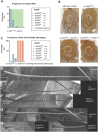
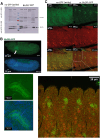
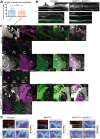
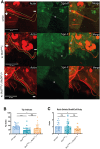
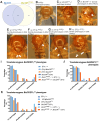
Update of
-
Role of BicDR in bristle shaft construction, tracheal development, and support of BicD functions.bioRxiv [Preprint]. 2023 Jun 16:2023.06.16.545245. doi: 10.1101/2023.06.16.545245. bioRxiv. 2023. Update in: J Cell Sci. 2024 Jan 15;137(2):jcs261408. doi: 10.1242/jcs.261408. PMID: 37398393 Free PMC article. Updated. Preprint.
Similar articles
-
Role of BicDR in bristle shaft construction, tracheal development, and support of BicD functions.bioRxiv [Preprint]. 2023 Jun 16:2023.06.16.545245. doi: 10.1101/2023.06.16.545245. bioRxiv. 2023. Update in: J Cell Sci. 2024 Jan 15;137(2):jcs261408. doi: 10.1242/jcs.261408. PMID: 37398393 Free PMC article. Updated. Preprint.
-
Recruitment of two dyneins to an mRNA-dependent Bicaudal D transport complex.Elife. 2018 Jun 26;7:e36306. doi: 10.7554/eLife.36306. Elife. 2018. PMID: 29944116 Free PMC article.
-
Bicaudal d family adaptor proteins control the velocity of Dynein-based movements.Cell Rep. 2014 Sep 11;8(5):1248-56. doi: 10.1016/j.celrep.2014.07.052. Epub 2014 Aug 28. Cell Rep. 2014. PMID: 25176647
-
Bicaudal-D and its role in cargo sorting by microtubule-based motors.Biochem Soc Trans. 2009 Oct;37(Pt 5):1066-71. doi: 10.1042/BST0371066. Biochem Soc Trans. 2009. PMID: 19754453 Review.
-
Dynein activators and adaptors at a glance.J Cell Sci. 2019 Mar 15;132(6):jcs227132. doi: 10.1242/jcs.227132. J Cell Sci. 2019. PMID: 30877148 Free PMC article. Review.
References
-
- Abdelilah-Seyfried, S., Chan, Y. M., Zeng, C., Justice, N. J., Younger-Shepherd, S., Sharp, L. E., Barbel, S., Meadows, S. A., Jan, L. Y. and Jan, Y. N. (2000). A gain-of-function screen for genes that affect the development of the drosophila adult external sensory organ. Genetics 155, 733-752. 10.1093/genetics/155.2.733 - DOI - PMC - PubMed
-
- Adler, P. N. (2020). The localization of chitin synthase mediates the patterned deposition of chitin in developing Drosophila bristles. bioRxiv 718841. 10.1101/718841 - DOI
Publication types
MeSH terms
Substances
Associated data
Grants and funding
LinkOut - more resources
Full Text Sources
Molecular Biology Databases

